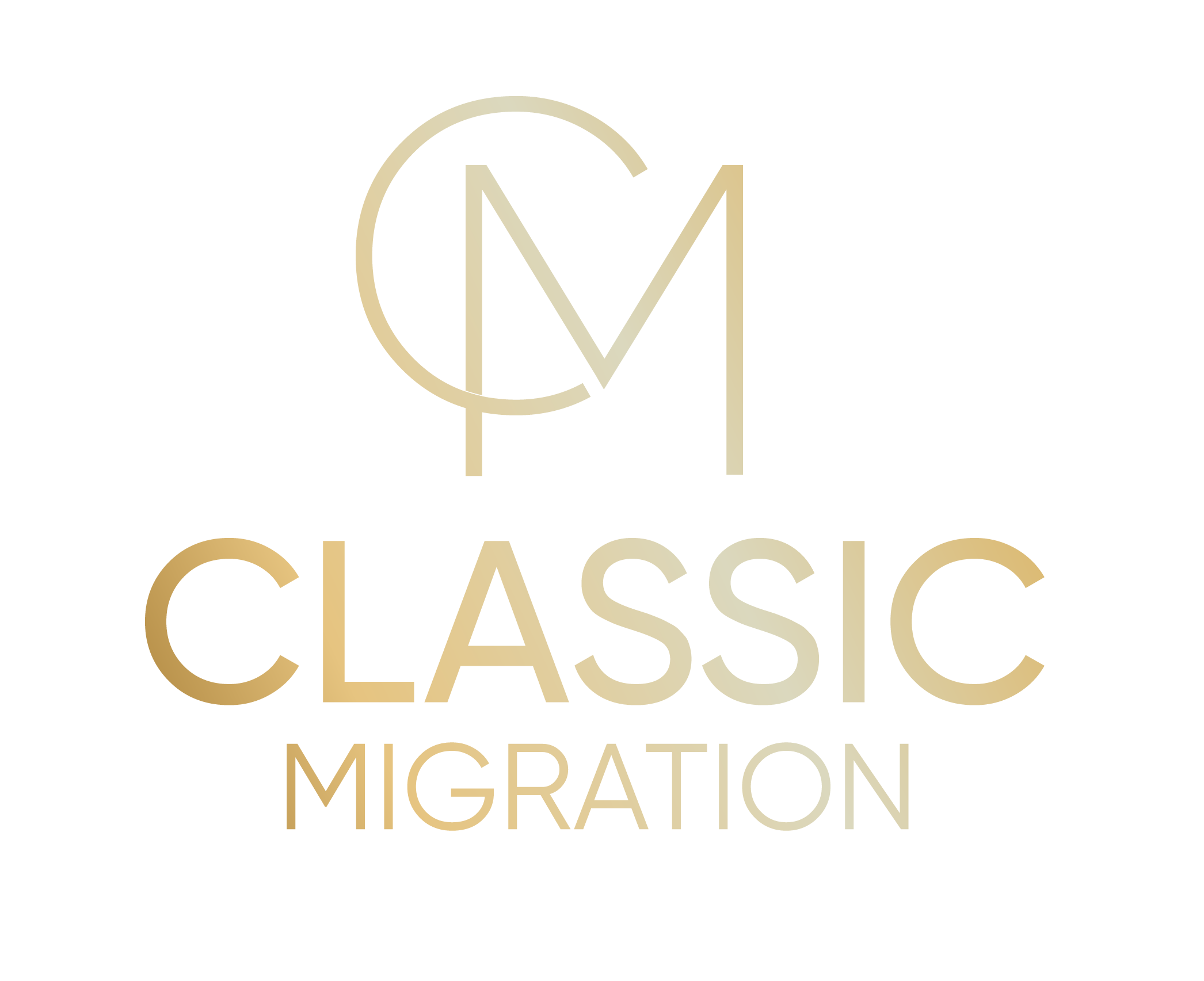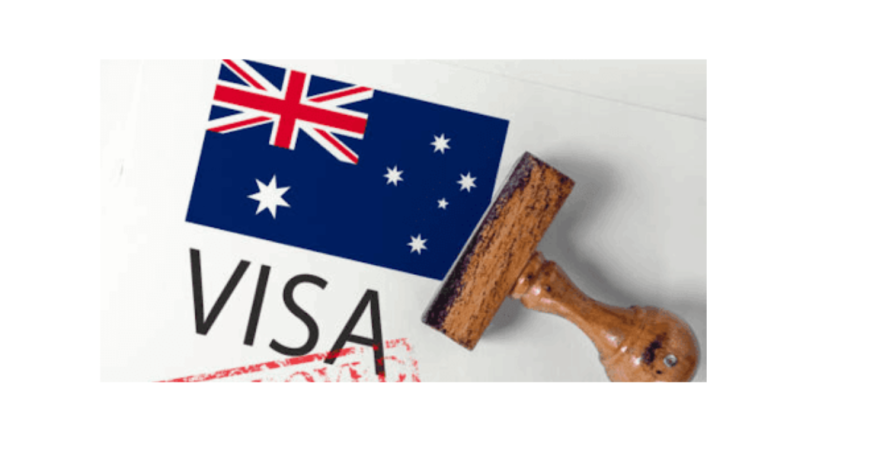Australia is one of the world’s top destinations for migrants seeking opportunities, education, and quality of life. However, one important decision stands out when it comes to moving to Australia: should I go for temporary migration Australia or aim for permanent residency right away? Throughout this guide, we help you understand the differences between temporary migration Australia and permanent migration to Australia. We will help you understand various visa types and guide you through the visa requirements and benefits of each option. If you are looking for short-term work experience or planning to build a life and migrate to Australia, we will guide you to figure out which paths align with your goals
What is a Temporary Visa?
A temporary visa is a type of visa that allows you to enter and stay in Australia for a limited time. Temporary visas are provided for specific reasons, such as study, business, visit, and short-term work. These visas are provided with specific requirements, conditions, and expiry dates that determine how long the visa holder can stay in Australia. Some temporary migration Australia visas can be pathways to a permanent visa later on. At the same time, many of them are designed for short-term stays and come with restricted rights and benefits compared to a permanent visa. This visa comes with limited rights and benefits compared to the permanent visas; temporary visa holders may not have access to the government services, medicare or welfare support, and their ability to work or study restricted based on their type as well.
What is a Permanent Visa?
The permanent visa allows people to live in Australia indefinitely. This visa also provides access to the rights and benefits of Australian citizens. Visa holders can stay in Australia without time limits and are granted a five-year travel facility to leave and re-enter the country freely during that period. Permanent visa holders get full access to the government services. Such as Medicare, Social Security, and public education, and can work and study without restrictions. Eligible visa holders can also apply for Australian citizenship after living in Australia for four years, and at least one year as a permanent resident. Permanent visa holders may sponsor eligible relatives, such as partners, children, or parents, to be admitted for permanent residence. Some common types of permanent visas are the Skilled Independent Visa (Subclass 189), Employer Nomination Scheme (Subclass 186), Partner Visa (Subclass 820/801), and Parent Visa (Subclass 103).
Temporary Visa Types in Australia
Australia offers different types of temporary migration Australia visa options, and they are designed to meet different short-term needs and circumstances. Whether you are planning to study, work, or for business, these visa options are customized to support your purposes. These temporary migration Australia visa options allow you to stay in Australia for a limited time, and each option has its own requirements, conditions, eligibility, and entitlements.
1. Work Visas
Australia offers a range of work visas that allow people from overseas to live and work in the country. Work visas are designed to address skill shortages, support Australia’s economic growth, and attract skilled workers. There are visa options customized to your needs, whether it’s short-term or long-term career opportunities.
Temporary Skill Shortage (TSS) Visa (Subclass 482)
Temporary Skill Shortage visa subclass 482 is designed to help Australian employers address worker shortages by bringing skilled workers from overseas. This temporary migration Australia visa allows you to work in Australia for up to four years, depending on your occupation and the streams you are applying under. An approved employer must nominate you and show that you have the necessary skills and experience for the job to qualify. This visa plays a critical role in helping Australia’s labor demand and offers businesses an accelerated way of sourcing skilled foreign professionals.
Working Holiday Visa (Subclass 417 and 462)
Working holiday visa subclasses 417 and 462 are ideal temporary migration Australia for international students who have recently completed their studies at an Australian institution. It offers a valuable opportunity to gain work experience, enhance career prospects, and potentially create a pathway for permanent residence. Depending on your qualifications and chosen stream, the visa can be granted for up to 5 years. This allows you to live, work, and further your education in Australia. This is a good opportunity for graduates looking to build a future in Australia.
Temporary Graduate Visa (Subclass 485)
Temporary graduate visa subclass 485 is for international students who have recently completed their studies at an Australian institution. This allows them to stay in Australia temporarily to live, work, or continue studying. This visa helps graduates gain local work experience. This visa can be a pathway to permanent residency in Australia. It can be valid up to 5 years depending on the stream and qualification and stream.
2. Student Visas
Australia is a popular destination for international students seeking high-quality education. To study in Australia, students need a valid visa, and Australia offers various visa options based on the nature of their studies and per studies and personal circumstances. Below are the key student visa types available:
Student Visa (Subclass 500)
Student visa subclass 500 is the most common visa for international students who want to live and study full-time at an Australian institution. This visa also permits students to work part-time up to 40 hours every two weeks while studying. To qualify for this visa, students must provide proof of enrollment, show financial capacity, and meet health and character requirements.
Student Guardian Visa (Subclass 590)
Student guardian visa subclass 590 is for parents, legal guardians who want to accompany and support international students under 18 years old while the student studies in Australia. This visa type allows you to stay for the same duration as the student’s visa. You must be at least 21 years old, have enough funds to support both yourself and the student. However, you cannot work on this visa; you are allowed to study English (ELICOS) for up to 20 hours per week and can also take part in a short course for up to 3 months.
3. Visitor and Business Visas

Australia offers different visitor and business visas to people who are interested in visiting to see family, visit, attend business meetings, or invest in the country. These visas are ideal for short visits and provide several alternatives depending on the purpose of your visit. The two most crucial visa types within this category are provided below:
Tourist Visa (Subclass 600)
The tourist visa subclass 600 allows people to visit Australia for travel, holiday, or to meet and visit friends and family. This visa is also suitable for those engaging in short-term, non-work-related business activities such as attending conferences or meetings. Tourist visas are granted for stays of up to 3,6, or 12 months, depending on the applicant’s purpose and circumstances. Visa holders cannot work in Australia, however, they may be able to take short, up to three-month training courses. Applicants are required to meet health, character, and financial requirements to be eligible.
Business Innovation & Investment Visa (Subclass 188)
Business innovation and investment visa subclass 188 is a temporary migration Australia visa for business owners, investors, and entrepreneurial activities. It is divided into several streams, including business innovation, investor, and entrepreneur, each with its own set of requirements. This visa has generally been taken as a step towards permanent residency through the Subclass 888 visa, should the applicant complete specific investment or business targets during their stay.
Permanent Residency (PR) in Australia
Australia offers pathways to permanent residency for skilled workers, business professionals, and those sponsored by employers or states. Permanent residency allows you to live, work, and study in Australia indefinitely, and PR holders also have access to healthcare and can apply for citizenship later.
PR Visa Categories
The Pr visa options are based on skills and employment, and this visa is for investing skilled workers with no sponsorship required. The Skilled Nominated Visa (Subclass 190) is provided to skilled applicants who are nominated by a territory or state. The Employer-Sponsored Visa (Subclass 186) provides for skilled staff nominated by an Australian employer, most commonly after some time within a 482 visa, to apply for PR.
Skilled Independent Visa (Subclass 189)
For skilled workers who are not nominated by a state or sponsored by a business, the subclass 189 is a permanent, points-based visa. You will have to be invited after making an Expression of Interest (EOI) through SkillSelect to apply. With this visa, you can live, work, and study anywhere in Australia. You can also sponsor a family, avail yourself of Medicare, and eventually apply for citizenship. If you have a job whose occupation is covered on the Medium and Long-term Strategic Skills List (MLTSSL), then it is perfect.
Skilled Nominated Visa (Subclass 190)
The Skilled Independent Visa (Subclass 189) enables skilled workers without employer or family, or state sponsorship to obtain permanent residency in Australia. You need to have your occupation listed on the skilled list, together with a successful skills assessment and points test results, and an invitation from SkillSelect to qualify. The Subclass 189 visa enables you to settle in any part of Australia while working and studying freely, and enables you to sponsor eligible family members and pursue Australian citizenship if you meet the requirements.
Employer-Sponsored Visa (Subclass 186)
The Employer-Sponsored Visa (Subclass 186) serves as a permanent visa that allows skilled workers to work in Australia after their nomination by approved employers. The Employer-Sponsored Visa (subclass 186) serves workers who previously held a 482 visa and qualify for permanent positions. The visa application process requires candidates to demonstrate their skills while fulfilling English language standards and health checks, and being younger than 45 years old. Permanent residency status through this visa enables people to work in Australia while living there permanently and enables them to petition for citizenship and family migration.
Permanent vs. Temporary Visas in Australia: Key Differences Explained
Before deciding to migrate to Australia, you must understand the distinction between temporary migration Australia and permanent migration visas. The various options present distinct purposes with different rights and time durations, and future progression opportunities. Here is a quick overview so it will be easier for you to see what kind of visa may be best for your needs.
| Feature | Temporary Visas | Permanent Visas |
| Duration of Stay | Limited stay, usually from up to months to years. | Indefinite stay, live, and work permanently in Australia. |
| Purpose-Specific | Designed for study, work, tourism, or short-term needs. | Long-term settlement, skilled migration, or family reunion. |
| Rights & Benefits | Limited access to services, such as healthcare, social benefits, and voting rights. | Full access to healthcare, benefits, and other public services, and they can vote if they are citizens. |
| Pathway to Citizenship | May lead to PR if conditions are met, but not guaranteed | Often, a direct pathway to citizenship after fulfilling residency requirements |
| Family Sponsorship | Limited or no rights to sponsor family members | Can sponsor eligible relatives for PR |
| Examples of Visas | Subclass 482 (TSS), Subclass 485 (Graduate), Subclass 500 (Student) | Subclass 189, 190, and 186 (Employer Nomination Scheme) |
The selection of your visa path depends on your objectives because the temporary migration Australia and permanent migration Australia visas have distinct characteristics. Understanding of visa advantages helps people decide between short-term Australian experiences and establishing their permanent residence.
Australia Migration: Should You Choose a Temporary or Permanent Visa?
Choosing between a temporary migration Australia and a permanent migration visa depends on your personal and career goals. If you are looking for short-term experiences such as traveling, studying, internships, or temporary employment arrangements, a temporary migration Australia visa might be your solution. It is versatile and can allow you to live in Australia without a long-term commitment.
A permanent visa offers long-term security and various advantages to those who want to establish their future in Australia for career development or family creation or citizenship acquisition.
A temporary migration Australia visa serves as an excellent initial step for those who remain uncertain about their plans. Most visa holders who start with temporary status will transition to permanent residency through different skilled migration options and employer sponsorships as well as family reunion applications. The temporary migration Australia visa enables you to live in Australia while maintaining flexibility for future permanent residency.
What Makes Classic Migration the Best Choice?
Working through Australia’s temporary migration Australia visa or permanent migration visa process can be slow and confusing. That’s where Classic Migration stands out. With a highly skilled team of migration experts, they provide one-on-one consulting, up-to-date legal advice, and step-by-step assistance tailored to your goals.
Here are some points that highlight why Classic Migration is a trusted partner in your migration journey:
- Experienced Leadership: With more than 15 years of experience in Australian immigration law, we provide expert guidance throughout the visa process.
- Comprehensive Services: Classic migration provides services for students, partners, families, employer-sponsors, businesses, and visas. We also help you guide through citizenship applications and migration appeals.
- Personalized Support: We provide one-on-one consulting tailored to their specific goals, with step-by-step assistance.
- High Client Satisfaction: Clients have given Classic Migration a 5-star rating because of their professional approach and efficient service, which excels at handling complex, urgent visa applications.
- Registered and Regulated: As registered migration agents with the Office of the Migration Agents Registration Authority (OMARA), they adhere to strict professional standards, providing clients with confidence in their services.
Whether it is applying for a temporary migration Australia visa like Subclass 491, trying to meet the 408 visa eligibility, or pursuing Skilled Migration to Australia, Classic Migration offers a smooth, stress-free experience. Our commitment to client achievement, attention to detail, and full familiarity with Australian immigration law ensures them as a trusted partner on your journey.
Conclusion
Your visa choice depends on your purpose and what you want to achieve in Australia. Temporary migration Australia visas suit shorter-term purposes such as study, work or just to taste a little Australian life without the longer, full-blown commitment. They are convenient and can even help you with permanent residency. On the other hand, if your plan for the future is to settle down in Australia, be it to work, raise a family, or become a naturalized citizen, it is the permanent visa that guarantees long-term safety and greater benefits. So with an acute understanding of your priorities, you can then select which route of migration makes the most sense to your future.
If you are unsure where to start, Classic Migration can help. They walk you through step by step, making an application for a temporary visa like 491 or 485, or on the journey to permanent residence via skilled or employer-sponsored streams.
Visit Classic Migration to start your journey with confidence.
FAQ: Temporary vs. Permanent Migration: Which One Suits You?
1. How long is a Temporary Visa in Australia?
Temporary Australian visa typically varies from a few months to 5 years, depending on the type of visa and the purpose of the visa. For example, visitor visas are 12 months, student visas are for the duration of your course, and work or graduate visas are 5 years, depending on your qualifications and work.
2. What is Visa 482 in Australia?
A Temporary Skill Shortage (TSS) visa or Visa 482 permits Australian employers to offer foreign skilled workers to help fill labour shortages. You can be employed for up to 4 years in Australia during up to four years, based on your job and the visa stream (short-term, medium-term, or labor agreements).
3. How much is a Temporary Visa to Australia?
The cost of an Australian temporary visa depends on the type of visa. The cost of the visitor visa ranges from AUD 190, the student visa from AUD 710, and work visas like the 482 start from AUD 1,455. Health checks and dependents may attract extra charges.
4. Can I work in Australia on a Temporary Visa?
Yes, there are short-term visas in Australia that allow you to work, but the conditions vary. For example, students with a student visa can work part-time, while visas like the 482 Temporary Skill Shortage visa allow full-time work in a sponsored job. Always check your visa conditions so that you can know your work rights.
5. How can I get Permanent Visa for Australia?
Australia grants permanent visas to eligible candidates who apply through skilled migration programs or employer sponsorship or family visa categories. The application process requires a suitable job position along with passing the points test and meeting English language and health standards and receiving an invitation to proceed.
6. Can I get 10 10-year Australian Visa?
Yes, you can get a 10-year Australian visa like a Visitor Visa (Subclass 600) or Business Visa if you qualify. Such visas are typically multiple entry or extended stay, but may have conditions like restricted work rights.




